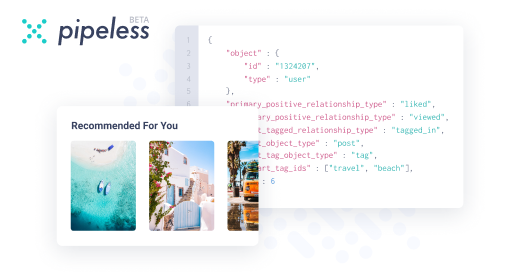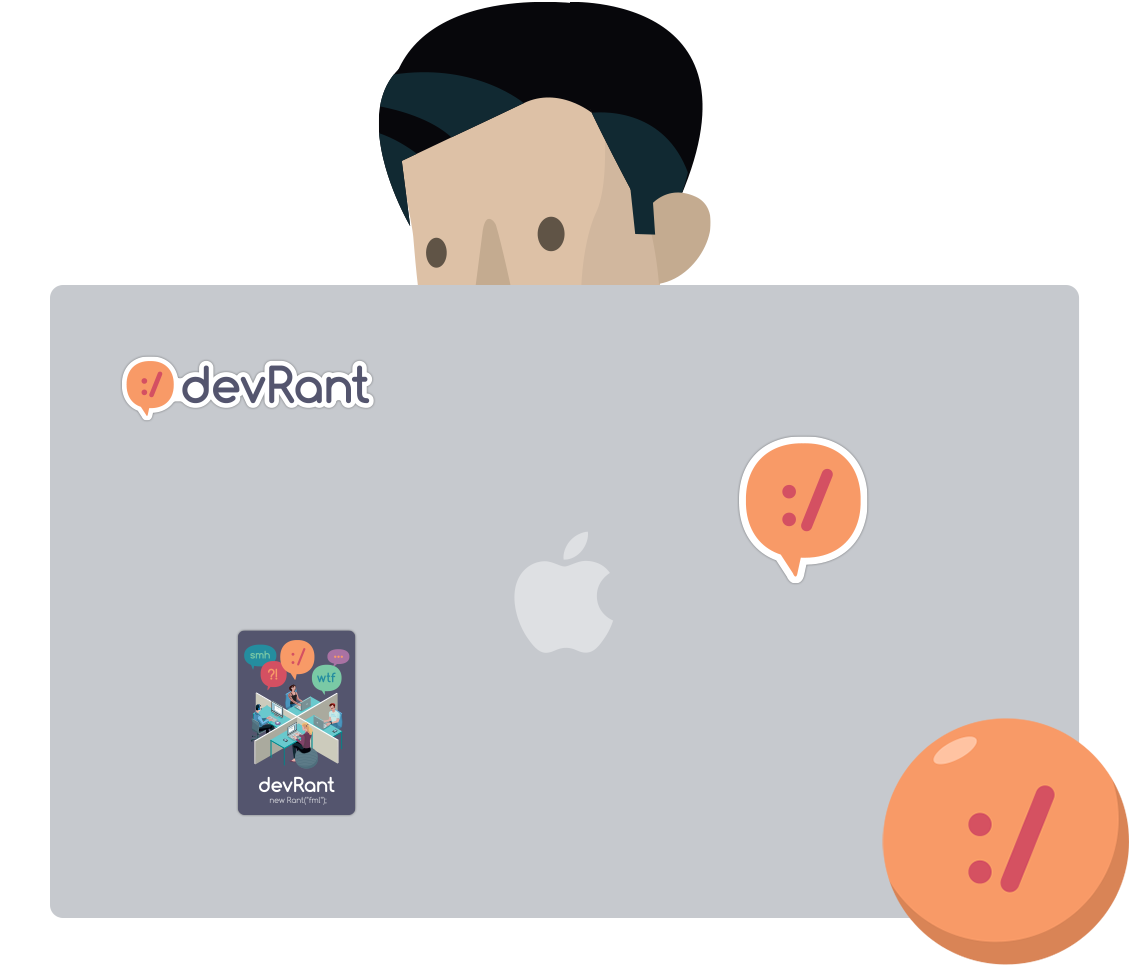Join devRant
Do all the things like
++ or -- rants, post your own rants, comment on others' rants and build your customized dev avatar
Sign Up
Pipeless API

From the creators of devRant, Pipeless lets you power real-time personalized recommendations and activity feeds using a simple API
Learn More
Search - "disk encryption"
-
Holy fuck, muscle memory just saved my ass.
At a train station wanting to do some work on my mini laptop which has disk encryption (LUKS I think). Realised that I forgot the password partly 😬
Few tries.... incorrect. FUCK.
*hey, let's try to let my hands do the work based on muscle memory!*
*starts typing the password (its insanely long) and presses enter*
*succesfully unlocked, booting...*
😅25 -
I love it when a fellow "dev" asks about some interesting security topic (full disk encryption) and I'm like "yeah I use LUKS pretty much everywhere".. and then takes an entire arm when given a hand.
Performance in LUKS? Yeah sure you can benchmark it within cryptsetup. Here's how to do it and choose a good cipher for your CPU.
D: Oh also how do I check my battery life?
M (thinking): you lazy fucking piece of shit.
M: FUCKING GOOGLE IT
D: Obviously that means that you don't know it.
M (thinking): so not only lazy but also disgustingly ungrateful, fucking twat.
M: acpi. Next time fucking Google it.
D: You know what? Never mind.
As if I'm the one that's fucking wrong now!! But you know what, never mind indeed. Because you've successfully wasted my fucking time instead of fucking googling "check battery life Linux" like a sensible dev would.
Fellow "dev", if you're on devRant I hope you read this. You can seriously go fuck yourself.4 -
tl;dr:
The Debian 10 live disc and installer say: Heavens me, just look at the time! I’m late for my <segmentation fault
—————
tl:
The Debian 10 live cd and its new “calamares” installer are both complete crap. I’ve never had any issues with installing Debian prior to this, save with getting WiFi to work (as expected). But this version? Ugh. Here are the things I’ve run into:
Unknown root password; easy enough to get around as there is no user password; still annoying after the 10th time.
Also, the login screen doesn’t work off-disc because it won’t accept a blank password, so don’t idle or you’ll get locked out.
The lock screen is overzealous and hard-locks the computer after awhile; not even the magic kernel keys work!
The live disc doesn’t have many standard utilities, or a graphical partition editor. Thankfully I’m comfortable with fdisk.
The graphical installer (calamares) randomly segfaults, even from innocuous things like clicking [change partition] when you don’t have a partition selected. Derp.
It also randomly segfaults while writing partitions to disk — usually on the second partition.
It strangely seems less likely to segfault if the partitions are already there, even if it needs to “reformat” (recreate) them.
It also defaults to using MBR instead of GPT for the partition table, despite the tooltip telling you that MBR is deprecated and limited, and that GPT is recommended for new systems. You cannot change this without doing the partitions manually.
If you do the partitions manually and it can’t figure out where to install things, it just crashes. This is great because you can’t tell it where to install things, and specifying mount points like /boot, /, and /home don’t seem to be enough.
It also tries installing 32bit grub instead of 64bit, causing the grub installer to fail.
If you tell it to install grub on /boot, it complains when that partition isn’t encrypted — fair — but if you tell it to encrypt /boot like it wants you to, it then tries installing grub on the encrypted partition it just created, apparently without decrypting it, so that obviously fails — specific error: cannot read file system.
On the rare chance that everything else goes correctly, the install process can still segfault.
The log does include entries for errors, but doesn’t include an error message. Literally: “ERROR: Installation failed:” and the log ends. Helpful!
If the installer doesn’t segfault and the install process manages to complete, the resulting install might not even boot, even when installed without any drive encryption. Why? My guess is it never bothered to install Grub, or put it in the wrong place, or didn’t mark it as bootable, or who knows what.
Even when using the live disc that includes non-free firmware (including Ath9k) it still cannot detect my wlan card (that uses Ath9k).
I’ve attempted to install thirty plus times now, and only managed to get a working install once — where I neglected to include the Ath9k firmware.
I’m now trying the cli-only installer option instead of the live session; it seems to behave at least. I’m just terrified that the resulting install will be just as unstable as the live session.
All of this to copy the contents of my encrypted disks over so I can use them on a different system. =/
I haven’t decided which I’m going with next, but likely Arch, Void, or Gentoo. I’d go with Qubes if I had more time to experiment.
But in all seriousness, the Debian devs need some serious help. I would be embarrassed if I released this quality of hot garbage.
(This same system ran both Debian 8 and 9 flawlessly for years)15 -
Me: "I'll use my old laptop as a server to access via SSH to do my Docker Tests. I don't wanna use Keyboard and Screen. So, I'll set up Debian Server"
Also me: "Oh, full disk encryption with a preboot Login required. That's such a GOOD idea"
Introducing: Stupid me 🤗 -
The coolest project I ever worked on wasn't programming per second, though it involved a bit of scripting. The company I worked for had an FTP over TLS backup solution and it was put together with glue and paperclips by a guy that hadn't the slightest idea what he was doing. In order to conform with the insurance, data had to be encrypted. I setup a raid-ed server with full disk encryption on the raid volume that fetched the key over the network at boot from another secure server. I wrote a series of scripts for provisioning users and so on. The backup connections was sftp using a ssh tunnel, the users were chrooted to their own home directories, and were unable to open shells. The system was 100x more robust and secure than the original. I set it up on short notice and received absolutely no recognition for saving the company's ass, but it was definitely a fun project.1
-
Trying to get HIPPA compliance, and wet have to put full disk encryption and anti virus software on all our servers...
All of our servers are on aws ec2 / eks. The instances we do control aren't big enough for anti virus to be running...
God help me now5 -
I know I'm probably the 1083742698574'th person to complain about this but what the hell? I'm building a Win 11 vm (to run a back-end service) and it _requires_ tpm, secureboot and drive encryption. Why?
Honestly, I don't like anything that going to make it harder for me to recover from a data emergency. Say what you have to about data security and whatnot, but I can't tell you how many grateful people have thanked me for taking the data off a drive from their dead pc. I saved their data from death - would not have been possible with drive encryption.
If I want my data safe, I'll just keep my computer with me.3 -
What do you windows users out there use for full disk encryption? Anyone using anything else than bitlocker?
Asking for a friend or some silly excuse like that.10 -
Your computer is probably vulnerable to Samy Kamkar's poisontap: a Pi Zero-based device that connects to usb and does the following:
- emulates an Ethernet device over USB (or Thunderbolt)
- hijacks all Internet traffic from the machine (despite being a low priority/unknown network interface)
- siphons and stores HTTP cookies and sessions from the web browser for the Alexa top 1,000,000 websites
- exposes the internal router to the attacker, making it accessible remotely via outbound WebSocket and DNS rebinding
- installs a persistent web-based backdoor in HTTP cache for hundreds of thousands of domains and common Javascript CDN URLs, all with access to the user's cookies via cache poisoning
- allows attacker to remotely force the user to make HTTP requests and proxy back responses (GET & POSTs) with the user's cookies on any backdoored domain
- does not require the machine to be unlocked
- backdoors and remote access persist even after device is removed and attacker sashays away
I need several minutes with your laptop to perform the hack, even if it's locked. Full-disk encryption and secure boot won't save you.
If you use GNU/Linux, install usbguard today. If you use macOS/Windows, idk, pray.19 -
Though I’ve seen devices like the following I’ve only ever seen them used for horrible purposes.
I was envisioning facility control being made capable by the use of a larger tablet device or tablet computer. The device would have no internet connection. It would not attach to the outside world at all.
It would not receive non manual software updates
It could view all air flow, temperature, lights, locks, electrical outlets, power draw, water usage, heaters, air conditioners, computer statins etc
And control and report statistics on them all.
Impractical you people said last time. But I would say cool if the device is kept super secure . That being said who knows how to do that since everything sucks once someone who knows what they’re doing has physical access lol
Personally all I don’t know how to break into is smart phones
Comps I could always figure out even if they had disk encryption given enough time.
The only reason phones are hard is you’re limited to network attacks and the boot loader is on the chip page.
Cause in the end a computer is just it’s hard drive in terms of security lol1 -
Ok, so for past 1 whole day I am trying to make vhost work on my brand new laptop, running Ubuntu 16.04 LTS... When I installed OS, I've set hard disk encryption, and on top of it - user home folder encryption. Don't ask me why I did both.
Setting up vhost is simple and straight forward - I did it hundreds, maybe thousands of times, on various Linux distros, server and desktop releases alike.
And of course, as it usually happens, opposed to all logic and reason - setting up virtual host on this machine did't work. No matter what I do - I get 403 (access not allowed).
All is correctly set - directory params in apache config, vhost paths, directory params within vhost, all the usual stuff.
I thought I was going crazy. I go back to several live servers I'm maintaining - exactly the same setup that doesn't work on my machine. Google it, SO-it, all I can see is exactly what I have been doing... I ended up checking char by char every single line, in disbelief that I cannot find what is the problem.
And then - I finally figured it out after loosing one whole day of my life on it:
I was trying to setup vhost to point to a folder inside my user's home folder - which is set to be encrypted.
Aaaaaand of course - even with all right permissions - Apache cannot read anything from it.
As soon as I tried any other folder outside my home folder - it worked.
I cannot believe that nobody encountered this issue before on Stackoverflow or wherever else.9
